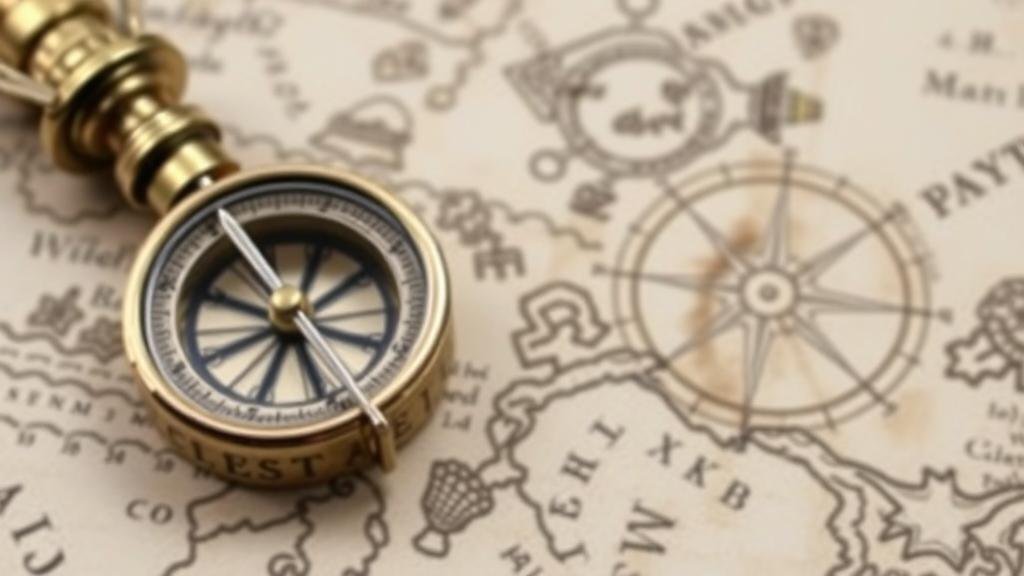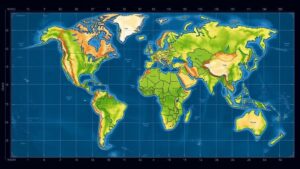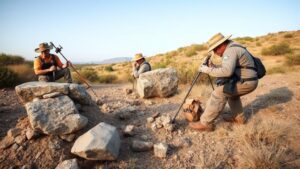Using Compass Bearings and Angles Found on Old Treasure Maps
Using Compass Bearings and Angles Found on Old Treasure Maps
The allure of treasure maps, with their cryptic symbols and inviting directions, has captivated adventurers and historians alike for centuries. Among the essential tools for deciphering these maps are compass bearings and angles, which provide critical information for locating treasures hidden in the folds of history.
Understanding Compass Bearings
Compass bearings are navigational references that signify directions based on a 360-degree system. A compass typically indicates the four cardinal directions: North (0°), East (90°), South (180°), and West (270°). Bearings are often expressed in degrees relative to North, allowing for precise navigation.
For example, a bearing of 45° indicates a direction that is halfway between North and East. Bearings on treasure maps frequently denote where to start searching or where to move next in pursuit of treasure. Treasure hunters must convert these angular instructions into actionable paths.
Interpreting Angles on Maps
Angles on treasure maps often denote relationships between features of the landscape. An angle can guide treasure seekers as they align their compass with geographical markers, ensuring they remain on the correct path. For example, if a map states to travel at a 30° angle from a notable landmark, the treasure hunter must align their compass accordingly and gauge the distance based on the scale of the map.
Also, angles can represent triangular relationships among map features. Using trigonometric concepts, treasure seekers can often determine unknown distances and directions. For example, if one knows the distances between two landmarks and the angles, they can apply the Law of Sines or Cosines to uncover further details about the treasures location.
Case Study: The Oak Island Mystery
A prime example of compass bearings and angles in action is the infamous Oak Island treasure mystery in Nova Scotia, Canada. Researchers and treasure hunters have made extensive use of old maps drawn by various parties in the 18th and 19th centuries. These maps, often scattered with angles and bearings, detail the islands unique geology and various landmarks.
One pertinent feature on the island is the Money Pit, which treasure hunters have attempted to locate based on old nautical charts and maps. Some maps indicated bearings leading to significant markers such as trees or rocks that align with the Money Pits location. Despite numerous excavations using compass angles for navigation, treasure seekers have yet to definitively uncover Oak Island’s secrets–illustrating both the intrigue and challenges posed by ancient maps.
Real-World Applications of Old Navigation Techniques
The principles of using compass bearings and angles extend beyond amateur treasure hunting; they find applications in various fields, such as archaeology, geology, and even modern surveying. In archaeology, the accurate interpretation of angles and bearings can lead to successful digs in previously uncharted territories.
In surveying, professionals employ similar techniques to calibrate boundaries and land assessments. By using modern GPS alongside traditional compass techniques, surveyors can optimize land measurement accuracy, highlighting that the principles of navigation remain relevant to contemporary practices.
Actionable Takeaways
- Learn to read compass bearings and convert them into actionable travel directions.
- Study trigonometry to understand how to calculate unknown distances and angles from given information.
- Explore historical case studies like Oak Island to gain insights into the practical use of these techniques for treasure hunting.
- Consider how these navigation principles can be applied in your professional career, from archaeology to modern surveying practices.
Through understanding compass bearings and angles, not only can you navigate old treasure maps with greater ease, but you also join an age-old tradition of explorers and treasure hunters, breathing life into the adventures of the past.


